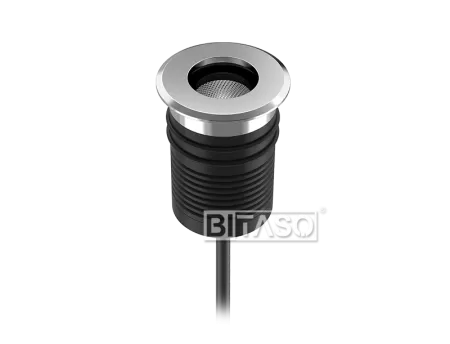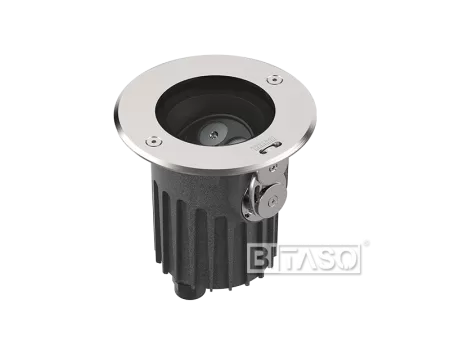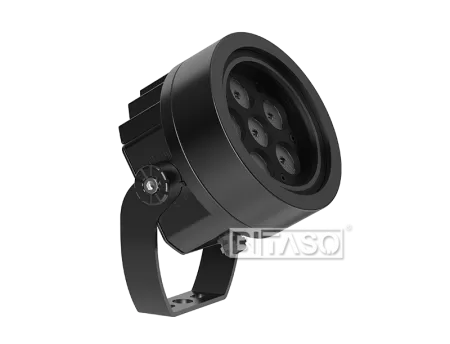Mar. 25, 2024
Landscape lighting placement varies depending on the techniques employed:
1. Highlighting: Positioned at the base of an outdoor feature.
2. Silhouetting: Placed behind the feature, towards a nearby wall.
3. Shadowing: Located at the base of the feature, casting shadows towards a wall.
4. Washing: Positioned a few feet away at an indirect angle to a wall or shrubs.
5. Up-lighting: Installed low at the base, similar to washing but with a more direct light.
6. Down-lighting: Bright and fixed in an eave, trellis, or hardscape.
7. Moonlighting: Soft, large fixtures placed high in trees angled downward.
8. Accenting: Angled up or down with a narrow beam from a concealed position.
9. Path-lighting: Often staggered to illuminate the entire path, particularly steps and obstacles.
10. In-grade: Installed in the surface, often at the base of a stone wall or hardscape to create shadows.
11. Pool/shoreline: Submerged less than 12 inches near steps or above, utilizing end or spaced placement.
Let's delve deeper into each technique.
Provide shape, color, and form using this style of landscape lighting. Start by placing your spotlight(s) at the base of what you would like to feature – a garden trellis, statue, a portion of your house or water feature are a few examples. Vary the distance and angle to achieve the desired highlight effect. The closer the light is, the more precise the area highlighted. Change the colors of the bulbs for a festive or seasonal look of your home, retaining wall, fence or garden.
Achieve a captivating nighttime effect in your landscape with silhouette lighting. Start by positioning a spotlight behind the landscape feature, directing it towards a wall or fence behind the feature. This setup creates a striking silhouette of the object against a softly illuminated background. Depending on the size of the area to be illuminated, multiple fixtures may be required. Silhouetting works best with dense subjects such as planters, meticulously trimmed evergreen shrubs, and trees with dense foliage.
By softly illuminating a feature and casting light onto the background surface, shadowing creates a mesmerizing array of shadows on walls or building facades. Angling low lighting upward generates expansive shadows larger than the original feature.
Experiment with distances, angles, and incorporate plants that sway in the breeze, such as ornamental grasses, to enhance the effect.
Washing is a technique commonly used for illuminating walls and rows of shrubs. It involves directing light at an indirect angle, resulting in a soft, ambient glow.
For optimal results, use a wide-angle floodlight with low wattage instead of a spotlight. Experimenting with the height and angle of the light is also advised to achieve the desired effect.
Various fixtures are suitable for up-lighting depending on the subject being illuminated. Essentially, this technique involves lighting from below, which can create shadows, washes, or silhouettes.
Up-lighting is ideal for showcasing objects or generating a contrast of shadow and light to accentuate different depths of a structure's wall, resulting in a dignified and majestic appearance.
Mount lighting fixtures on a tree or structure such as a wall or building, directing the light downward. The outcome varies based on what the light is attached to. For instance, fixtures attached under the eaves of a home tend to highlight the architectural features of the house.
Down-lighting produces a directly illuminated area at the base of the structure to which the fixture is attached.
As its name suggests, moonlighting replicates the gentle glow of moonlight. This effect is achieved by positioning light fixtures high within the foliage of a tree, angled downward.
The illumination filtering through the tree's branches and foliage creates captivating shadows on the ground, along with a soft, ambient glow emanating from within.
Employ accenting to highlight a focal point, such as a statue or architectural feature. This technique utilizes either up-lighting or down-lighting to accentuate the object, resulting in a distinctive interplay of shadows.
A crucial aspect of this technique is to employ a narrow beam of light from a concealed fixture, ensuring that all attention remains focused on the object itself.
Ensuring safe navigation along paths doesn't mean sacrificing ambiance or adventure.
When positioning fixtures along walkways or paths, take into account potential risks such as being kicked or struck by a mower, and angle them downward to prevent glare. Various down-lighting techniques can be employed to illuminate a path effectively.
In-grade lighting is typically installed at the base of a stone wall or other hardscape feature.
These fixtures, commonly well lights, are often installed flush with the surface. This technique is particularly effective in areas where other fixtures may pose a tripping hazard or unwanted obstacle.
Lighting for water features can be installed both above and below the surface. For adequate illumination of underwater stairs in a spa or pool, fixtures in that area should be positioned no more than 12 inches below the surface.
In general, fixtures placed at either end or spaced along the side wall are the most practical locations, ensuring coverage for curved areas. Illuminating moving water from below can create a striking effect, highlighting the surface's movement. It's essential to have this style of lighting installed by a licensed professional for safety.
Hot Products

DIAMOND D38 SMD
Luminaures with CREE COB or XP-E/G LEDS provide excellent light quality with highly precise light distribution,free of colour shifts and dis-tortion,special PCB layouts ensure the led moudules are optimally matched to the optical system of the luminaires.

EARTHA D135 SMD Beam Angle Adjustable Uplight
Beam Direction Adjustable In-Ground Light D135 SMD Outdoor 6W-12W DC48V

MILESTONE D120 SMD Bracket
Surface Architectural Floodlight Milestone D120 SMD Bracket 15-24W
Contact Us
E-mail: sales@bitaso-lite.com
Tel.: +86 758 2801 266
Phone: +86 186 2047 1396
Add.: No.308, Lianhai Rd., Jianghai District, Jiangmen City, GD.P.R. China